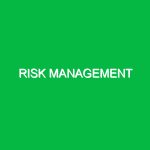In the ever-evolving landscape of workplace safety, the concept of risk assessment stands paramount. It plays a critical role in the Health, Safety, and Environment (HSE) domain, guiding organizations in identifying, evaluating, and mitigating potential hazards. But what does risk assessment truly entail, and why is it indispensable for a safe working environment? This article delves deeply into these questions, exploring the intricacies of risk assessment, highlighting potential hazards, and offering actionable best practices.
Defining Risk Assessment
Risk assessment is a systematic process used to identify potential hazards that could negatively impact individuals, property, or the environment. This process not only assesses the likelihood of these hazards occurring but also evaluates the severity of their consequences. By understanding these factors, organizations can prioritize risks and implement effective control measures.
In the HSE context, risk assessment is vital for fostering a culture of safety. It provides a structured approach to foresee issues before they arise. For instance, during my time working in a manufacturing plant, we conducted a thorough risk assessment that revealed a significant risk of machinery malfunctions. This proactive measure led us to invest in regular maintenance and training sessions, ultimately preventing any serious incidents. Such experiences underscore the importance of risk assessment in real-world applications.
The Importance of Risk Assessment in HSE
Risk assessment is not merely a compliance requirement; it’s a fundamental practice that enhances workplace safety and operational efficiency. By systematically identifying and mitigating risks, organizations can:
- Enhance employee safety and well-being.
- Reduce the likelihood of accidents and injuries.
- Minimize legal liabilities and associated costs.
- Improve operational efficiency and productivity.
- Foster a culture of safety among employees.
In essence, risk assessment serves as the backbone of any health and safety strategy, ensuring that potential threats are proactively managed rather than reactively addressed.
Identifying Potential Hazards and Risks
The first step in risk assessment involves identifying various hazards. Hazards can be classified into different categories, each posing unique risks. Here are some of the most common categories:
1. Physical Hazards
Physical hazards include environmental factors that can cause harm. These may include:
- Slips, trips, and falls: Often caused by wet floors, uneven surfaces, or cluttered walkways.
- Noisy environments: Prolonged exposure to high noise levels can lead to hearing loss.
- Temperature extremes: Both heat and cold can have detrimental effects on health.
2. Chemical Hazards
Chemical hazards arise from exposure to harmful substances. These can include:
- Toxic substances: Chemicals that can cause health issues upon exposure, such as asbestos or heavy metals.
- Corrosive materials: Substances that can damage skin or materials, such as acids and bases.
- Flammable substances: Chemicals that can ignite and cause fires or explosions.
3. Biological Hazards
Biological hazards involve exposure to living organisms that can cause health issues. Examples include:
- Bacteria and viruses: Pathogens that can spread diseases in workplaces, especially in healthcare or laboratory settings.
- Fungi: Mold and mildew that can cause respiratory problems.
- Allergens: Substances that can trigger allergic reactions, such as dust or certain animals.
4. Ergonomic Hazards
Ergonomic hazards occur when the physical demands of a job do not match the worker’s capabilities. This can lead to:
- Repetitive strain injuries: Injuries resulting from repetitive motions, such as typing or assembly line work.
- Poor posture: Misalignment of the body due to improper workstation setup.
- Heavy lifting: Tasks that require lifting heavy objects can lead to musculoskeletal disorders.
5. Psychological Hazards
Psychological hazards encompass factors that affect mental health. These may include:
- Workplace bullying: Harassment that can lead to significant stress and anxiety.
- High workloads: Excessive pressure to meet deadlines can result in burnout.
- Lack of support: Insufficient assistance from management can lead to feelings of isolation.
Best Practices for Risk Assessment
When it comes to conducting a thorough risk assessment, following best practices is crucial. Here are some actionable steps to guide you through the process:
1. Involve Employees
Engaging employees in the risk assessment process is vital. They often have firsthand experience with the hazards present in their work environment. For example, at a construction site, workers can provide insights into potential fall risks that management may overlook. Involving employees fosters a sense of ownership and responsibility for safety.
2. Use a Structured Approach
Implement a systematic approach to capturing and analyzing data. Tools like checklists, risk matrices, and software can assist in assessing risks effectively. A risk matrix, for instance, helps prioritize risks based on their likelihood and impact, allowing teams to focus on the most pressing issues first.
3. Regularly Review and Update Assessments
Risks are not static; they evolve over time due to changes in processes, equipment, or regulations. Regularly reviewing and updating risk assessments ensures they remain relevant. For instance, after introducing new machinery in a factory, it’s essential to reassess potential hazards associated with its operation.
4. Implement Control Measures
Once risks are identified, it’s crucial to implement control measures to mitigate them. The hierarchy of controls provides a framework, starting from the most effective to the least:
- Elimination: Removing the hazard entirely, if feasible.
- Substitution: Replacing a hazardous material with a less hazardous one.
- Engineering controls: Implementing physical changes to reduce exposure, such as installing guards on machinery.
- Administrative controls: Changing work policies or procedures to reduce risk exposure.
- Personal protective equipment (PPE): Providing protective gear to employees when other controls are insufficient.
5. Train Employees
Training is essential for ensuring that employees understand the hazards and the measures in place to protect them. Regular training sessions can reinforce safety practices and keep safety protocols fresh in employees’ minds. When I worked in a lab, we held monthly safety drills, which not only educated staff but also instilled confidence in our safety measures.
Regulations and Standards Governing Risk Assessment
Numerous regulations and standards guide the process of risk assessment in various industries. Some key regulations include:
- Occupational Safety and Health Administration (OSHA): In the United States, OSHA mandates that employers conduct risk assessments to identify and mitigate workplace hazards.
- ISO 45001: An international standard specifying requirements for an occupational health and safety management system, focusing on risk assessment and management.
- Health and Safety at Work Act 1974 (UK): This legislation requires employers to ensure the health, safety, and welfare of employees, including the need for risk assessments.
Adhering to these regulations not only ensures compliance but also promotes a safer work environment.
Conclusion
Risk assessment is a cornerstone of effective health, safety, and environmental management. By systematically identifying and evaluating potential hazards, organizations can create safer workplaces, reduce risks, and enhance overall productivity. Through proactive measures, continuous training, and regular reviews, businesses can foster a culture of safety that not only protects employees but also contributes to organizational success. In a world where safety cannot be compromised, risk assessment remains an essential practice for all organizations committed to the welfare of their workforce.


